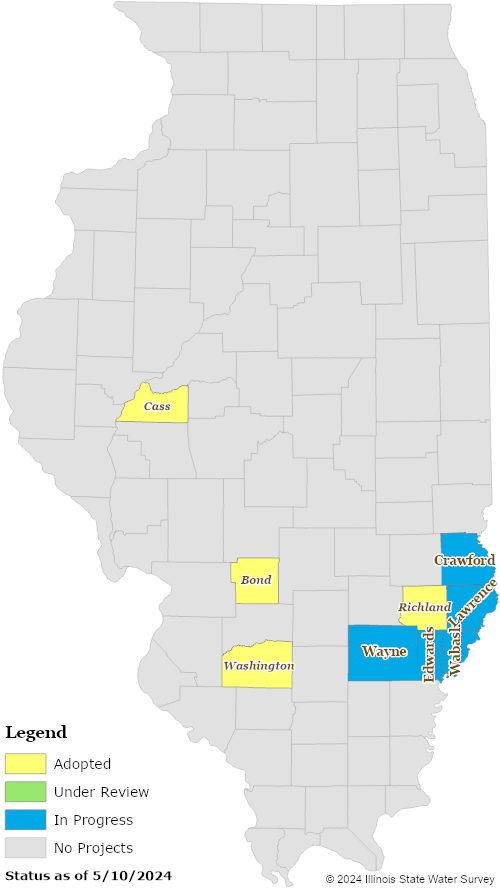- Crawford County
- Edwards County
- Henderson County
- Jersey County
- Lawrence County
- Wabash County
- Wayne County
Click a shaded county on map, or choose an ongoing project from the sidebar:

The Illinois State Water Survey (ISWS) collaborates with Illinois Counties, Regional Planning Commissions, and the University of Illinois Extension to create and update local Hazard Mitigation Plans. Hazard Mitigation is defined as any sustained action taken to reduce or eliminate the long-term risk to life and property from hazard events. It is an on-going process that occurs before, during, and after disasters and serves to break the cycle of damage and repair in hazardous areas. The essential steps of hazard mitigation are Hazard Identification, Vulnerability Analysis, and Creating a Hazard Mitigation Strategy. All three steps are addressed in the creation of the local Hazard Mitigation Plan.
Preparing a plan requires the engagement of local governments, stakeholders, and residents in the planning process. Developing the hazard mitigation plan will enable a county to:
FEMA requires every locality to maintain a hazard mitigation plan that examines the risk and impact of natural disasters and provides strategies for reducing impacts to people and property. A plan must be updated every 5 years to ensure relevancy and continued support from FEMA for its mitigation projects.
Please Note: this page contains only plans that the CHAMP team has worked on. For more information on all the approved plans in Illinois, please visit the Illinois Emergency Management Agency's (IEMA) Mitigation Planning page.
In case of any questions / queries, please contact us at: mitigation@isws.illinois.edu
 Copyright ©
2025
- All Rights Reserved - University of Illinois Board of Trustees | Email CHAMP | (217) 244-3372
Copyright ©
2025
- All Rights Reserved - University of Illinois Board of Trustees | Email CHAMP | (217) 244-3372
Template by OS Templates